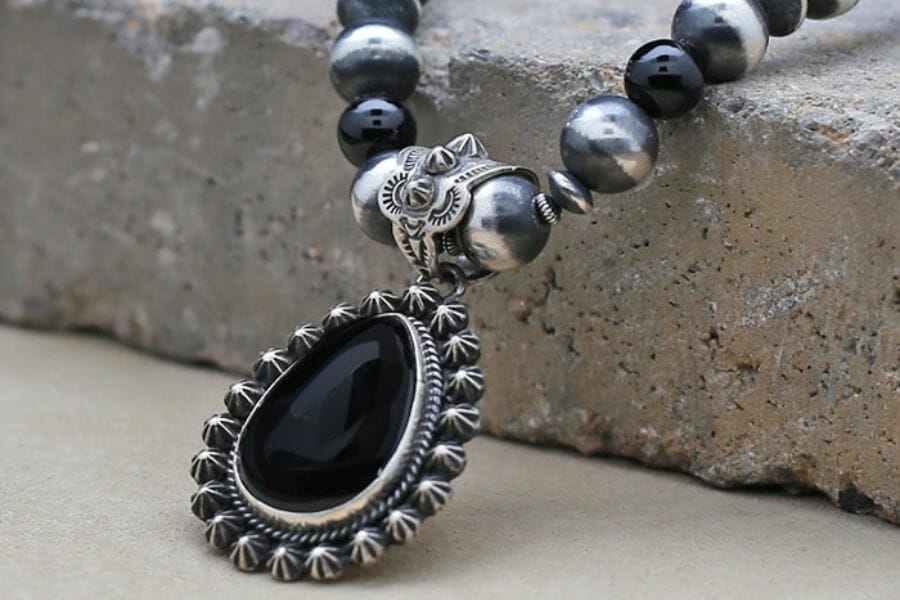Onyx is a gemstone that has captured the hearts and imaginations of people for centuries. In this article, we’ll delve into the allure of onyx, shedding light on the factors contributing to its value, price, and worth. We’ll explore the unique characteristics of this enchanting stone, from its bewitching banding to its versatility in design.
Whether used as a statement piece in jewelry or as a decorative touch in architecture, onyx has been a sought-after material, exuding an air of elegance and mystique. Its rich history and inherent beauty make it an intriguing choice for collectors and designers.
As you read on, you’ll gain insights into what makes Onyx so prized in the world of gemstones. We’ll explore its value, price, and worth, all while uncovering the reasons behind its timeless appeal. Trust me; it’s a journey you won’t want to miss!
What Onyx Is
Onyx is a variety of chalcedony, a type of microcrystalline quartz formed through a natural process where silica minerals are deposited within igneous rocks’ cavities or sedimentary formations.
This intriguing gemstone has an enigmatic charm, primarily due to its unique bands of color, typically black or white, but can also be found in shades of red, brown, or even green. These bands are created by parallel layers of the mineral chalcedony, resulting in an attractive, striped pattern that has captivated people for centuries.
All kinds of colors of onyx are listed below. These aren’t the only colors, but since onyx can be diverse and contain many trace elements, these are the most typical ones available.
Sardonyx
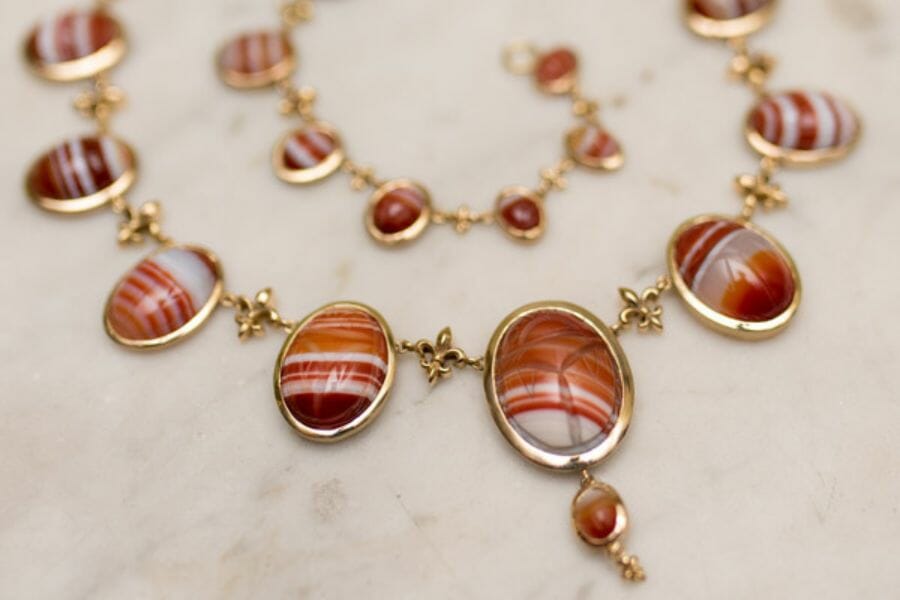
Sardonyx, a beautiful and unique chalcedony, is a lovely gemstone with distinct red, white, and sometimes black bands. These striking bands of color result from the natural layering process of the minerals sard (a reddish-brown variety of chalcedony) and onyx (typically black or white chalcedony). With its remarkable blend of warm and cool hues, sardonyx has garnered the admiration of gemstone enthusiasts and collectors for ages.
Historically, sardonyx was highly prized for its artistic and symbolic potential. Ancient Romans and Greeks were particularly fond of this gem, often carving intricate cameos and intaglios into sardonyx stones.
These detailed engravings portrayed scenes from mythology and portraits of prominent figures. The layers of color provided a striking contrast between the carved image and the background, resulting in visually stunning and memorable works of art.
How much is Sardonyx worth
Sardonyx comes in a wide variety of prices because each has unique features. You can find it for $1 to $500 per carat, depending on the size and quality.
Black Onyx
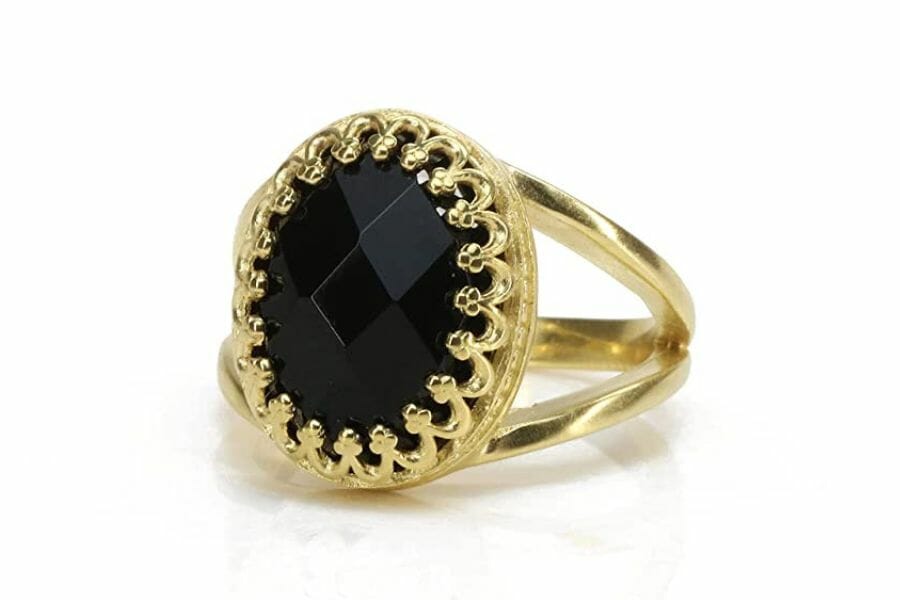
Black onyx, an alluring and sophisticated variety of chalcedony, is celebrated for its deep, jet-black hue and the air of mystery it evokes. This beautiful gemstone often boasts a smooth and glossy surface, which makes it a popular choice for polished cabochons or beads.
Black onyx gets its deep, dark color from iron and carbon compounds within the chalcedony, a type of microcrystalline quartz. While natural black onyx does exist, it is relatively rare.
Occasionally, black onyx can also feature subtle, white, or gray bands, adding a touch of contrast and intrigue to its appearance. Its elegant and versatile color has made it a sought-after stone in jewelry, effortlessly complementing casual and formal ensembles.
How much is a black onyx worth
Because each black onyx has a distinctive feature, they are available at various price points. Depending on the size and quality, it can be anywhere from $1 to $500 per carat.
White Onyx
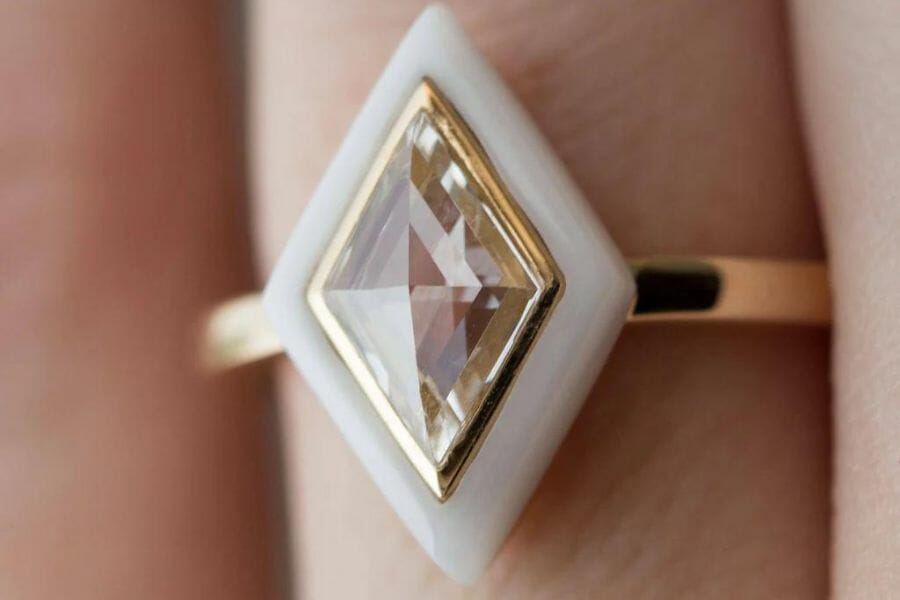
White onyx is distinguished by its soft, milky-white hue and subtle bands or swirls of color. Unlike its dark and mysterious black onyx, white onyx has a delicate and soothing appearance.
The gemstone’s translucence and gentle coloration create a sense of serenity and purity, enchanting admirers for centuries. Its inherent beauty and elegance make it popular for decorative items like sculptures, carvings, and jewelry designs.
White onyx gets its characteristic milky-white color from the unique arrangement of microscopic quartz crystals, which make up the chalcedony mineral. The delicate white hue occurs when the chalcedony has a relatively low concentration of impurities or inclusions. In the case of white onyx, the absence of elements like iron, manganese, and other trace minerals allows the stone to exhibit its pure white color.
How much is a White Onyx worth
White onyx comes in a range of prices because each has unique qualities. Depending on the size and quality, these can vary between $1 to $500 per carat.
Carnelian Onyx
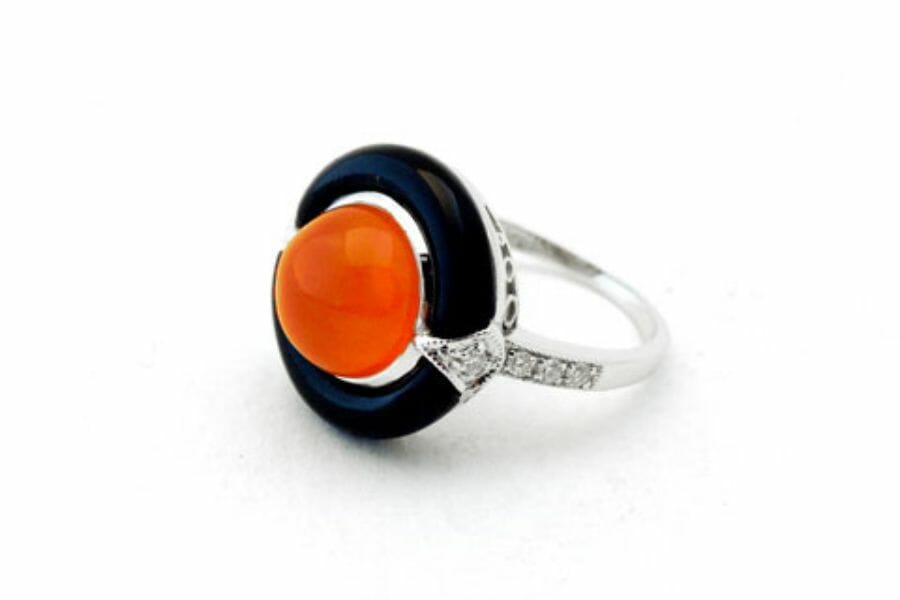
Carnelian onyx showcases a stunning blend of warm, reddish hues ranging from pale orange to deep red. The term “carnelian onyx” describes a banded gemstone that features layers of carnelian, a richly colored form of chalcedony, alongside contrasting layers of onyx, which can be black, white, or gray.
The visually arresting patterns created by these contrasting layers have captured the imagination of gemstone enthusiasts for centuries, making carnelian onyx a highly sought-after stone.
Carnelian onyx gets its vibrant colors from the presence of iron impurities within the chalcedony mineral. The reddish hues of carnelian result from the oxidation of iron, which forms iron oxide, also known as hematite. The varying shades of red and orange in Carnelian2 are determined by the specific concentration of these iron impurities and the size of the microscopic quartz crystals that make up the chalcedony.
How much is a Carnelian Onyx worth
Because each carnelian onyx has distinct characteristics, each has different pricing ranges. Depending on the size and quality, they can sell for around $1 to $500 per carat.
Blue Onyx
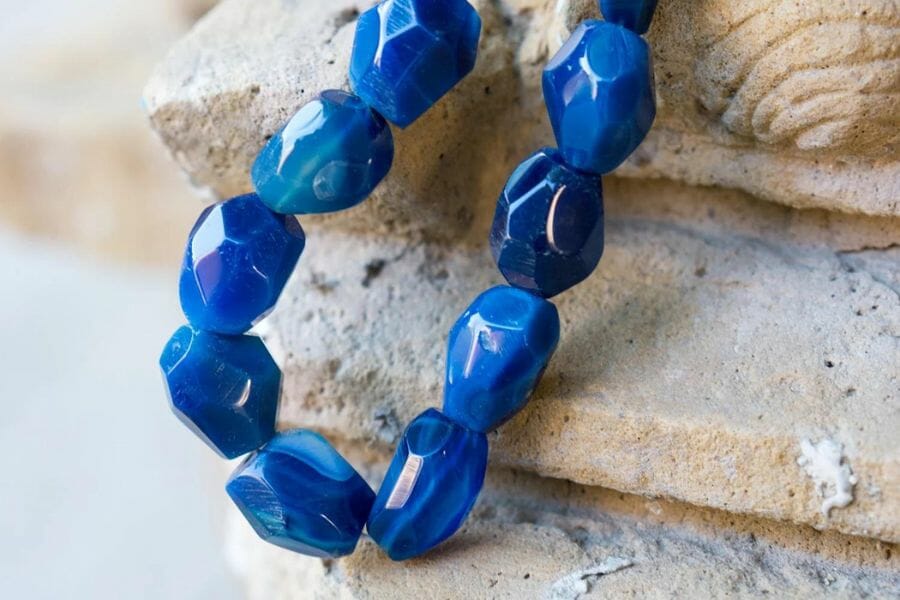
Blue onyx is characterized by its soothing shades of blue, ranging from pale sky blue to deeper, more saturated hues. The gemstone often features subtle bands or swirls of contrasting colors, such as white, gray, or even black, which add depth and intrigue to its appearance. The unique coloration of blue onyx and its captivating patterns make it a highly prized gemstone among collectors and jewelry designers alike.
Blue onyx gets its unique color from trace minerals or impurities within the chalcedony mineral. While the elements responsible for the blue hues vary, they often include copper, cobalt, or nickel minerals.
How much is a Blue Onyx worth
Each blue onyx has unique qualities, and their prices vary. They can sell between $1 to $500 per carat, depending on the size and quality.
Red Onyx
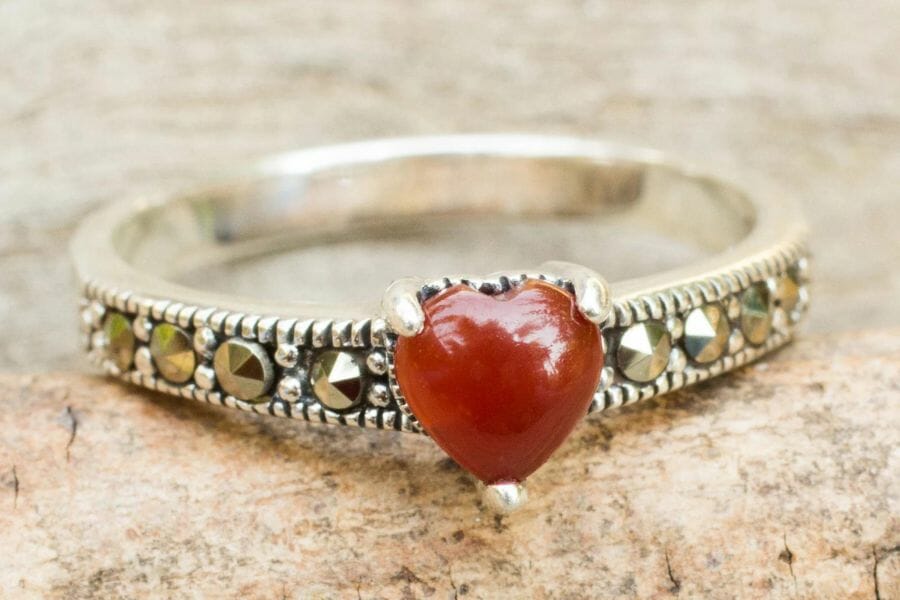
The warm, deep crimson colors and attractive patterns of red onyx make it an enchanting gemstone. It frequently has bands of striking different hues, including white or black, which add to its distinctive and exciting appeal. Red onyx stands out from other chalcedony variations due to its stunning color. It’s a popular option for people looking to add bright, fiery energy to their jewelry or decorative items.
Red onyx gets its vibrant red color from the presence of iron impurities within the chalcedony mineral. The iron ions are oxidized, forming iron oxide, which results in the rich red tones exhibited by the gemstone. The specific arrangement of the microscopic quartz crystals and the concentration of iron impurities in the chalcedony determine the shades of red in red onyx.
How much is a Red Onyx worth
Every red onyx is different and has distinct features. Depending on the size and grade, these can sell for $1 to $500 per carat.
Why Onyx Is So Expensive
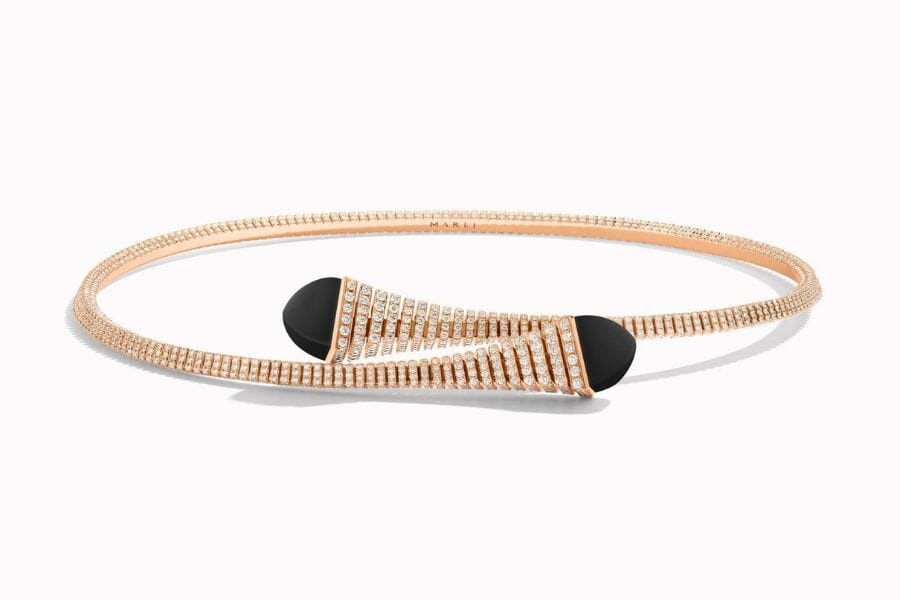
The timeless appeal of onyx lies in its striking patterns and vibrant colors, which result from the natural layering process of the silica minerals within the gemstone. The contrast created by these layers, whether parallel bands or swirling patterns, has long been admired for its artistic potential. Throughout history, onyx has been skillfully crafted into intricate carvings, cameos, and intaglios that showcase the stone’s undeniable beauty.
Onyx’s versatility allows it to be easily combined with other gemstones and materials, resulting in stunning jewelry designs suitable for various occasions. Whether set in a simple pendant or incorporated into an elaborate, statement-making piece, onyx consistently adds an element of sophistication and intrigue.
The rarity of specific onyx colors, such as natural blue or red onyx, also contributes to the stone’s value. The scarcity of these colors drives up their desirability and worth, enticing collectors and gemstone enthusiasts.
Onyx’s value stems from its unique visual appeal, rich historical and cultural significance, metaphysical properties, and rarity in some instances. This alluring gemstone continues to be a treasured and sought-after addition to jewelry, art, and personal adornment, promising to captivate future generations.
It’s common for onyx to be mistaken for other rocks and minerals. To avoid any confusion, look at our informative guides below to ensure that what you have is truly onyx:
How To Determine The Value Of Onyx
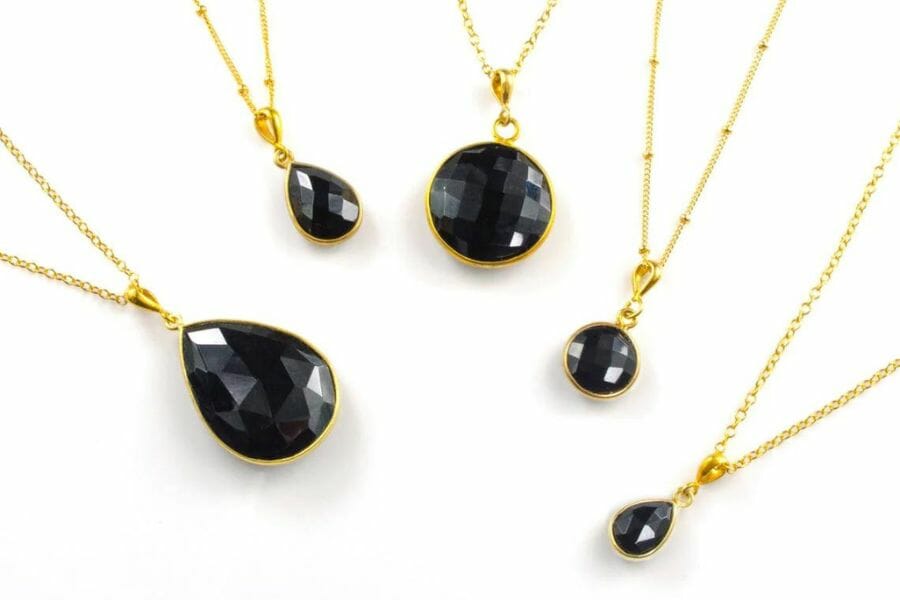
Several variables influence onyx prices, which can help buyers make wise choices. The following are the main variables affecting onyx pricing:
Color
The color of the onyx plays a significant role in determining its value. Rarer colors like natural blue or red onyx command higher prices due to scarcity. In contrast, more common colors like black or white may be more affordable. The evenness and depth of color are also important, as stones with consistent and vivid hues are often more valuable.
Clarity and transparency
The level of transparency or opacity in Onyx can impact its price. Stones with consistent transparency or opacity, without noticeable inclusions or imperfections, are generally more valuable. Inclusions or flaws within the stone can reduce its overall value.
Pattern and banding
One of the main attractions of Onyx is its unique banding or patterns. Stones that exhibit well-defined, distinct, contrasting bands or intricate patterns are more desirable and valuable. In some cases, particularly appealing designs can fetch premium prices.
Cut and polish
The quality of the cut and polish of an onyx gemstone can significantly affect its value. Expertly cut and polished stones that maximize the visual appeal of the color and pattern will typically command higher prices than poorly cut or finished pieces.
Size and carat
The size of an onyx stone can also influence its price. Larger rocks, particularly those with unusual patterns or colors, can be more valuable due to their visual impact and rarity.
Treatment
As previously mentioned, some onyx stones undergo treatments such as dyeing or heating to enhance their color. Natural, untreated stones are generally more valuable than their treated counterparts, as they are rarer and often considered more desirable by collectors and enthusiasts.
Provenance and rarity
The source or origin of the onyx can also play a role in determining its value. Stones from specific localities with a reputation for producing high-quality onyx may be more sought-after and command a premium price. Additionally, rare onyx specimens with unique features, such as unusual patterns or colors, can be more valuable due to their scarcity.
Onyx Price By Color
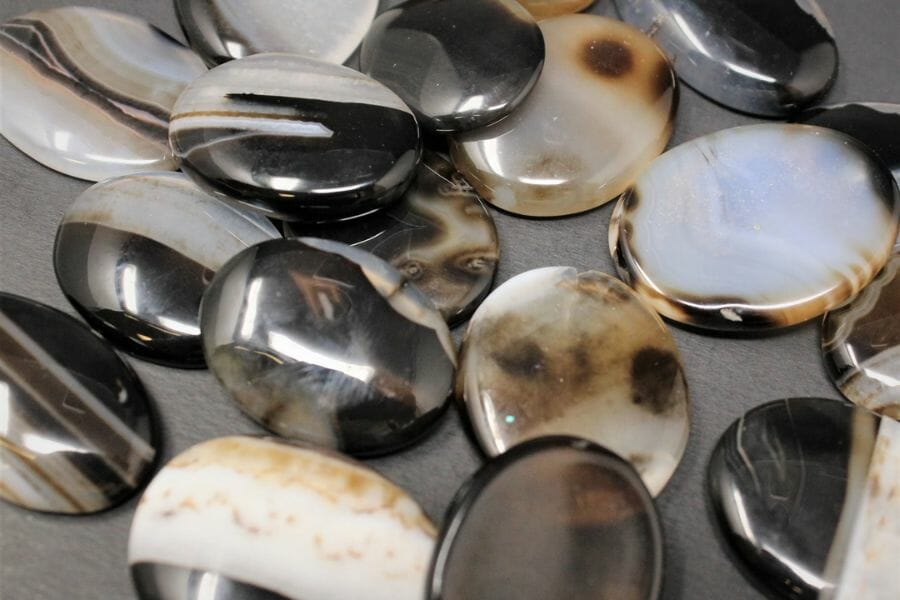
Onyx prices for good quality stones typically range from $1 to $500 per carat. However, rare gems may fetch more outstanding prices.
The price of onyx can vary greatly depending on several factors, such as color, clarity, pattern, size, cut, polish, treatment, and provenance. It’s challenging to provide a specific price without considering these factors. Onyx gemstones can range from a few dollars per carat for more typical colors and lower-quality stones to hundreds of dollars for rare colors or exceptional-quality pieces.
To determine the value of a specific onyx gemstone or piece of jewelry, it is best to consult a reputable gemologist or appraiser who can evaluate the stone based on the abovementioned factors.
Onyx pricing by unit of measurement
| Measurement | Price |
| A carat of onyx | $1 – $500 |
| A gram of onyx | $5 – $2,500 |
| An ounce of onyx | $145 – $70,875 |
| A kilogram of onyx | $5,000 – $2,500,000 |
| A pound of onyx | $2,270 – $1,133,980 |
| A ton of onyx | $4,535,930 – $2,267,962,500 |
How To Get An Appraisal On Your Onyx
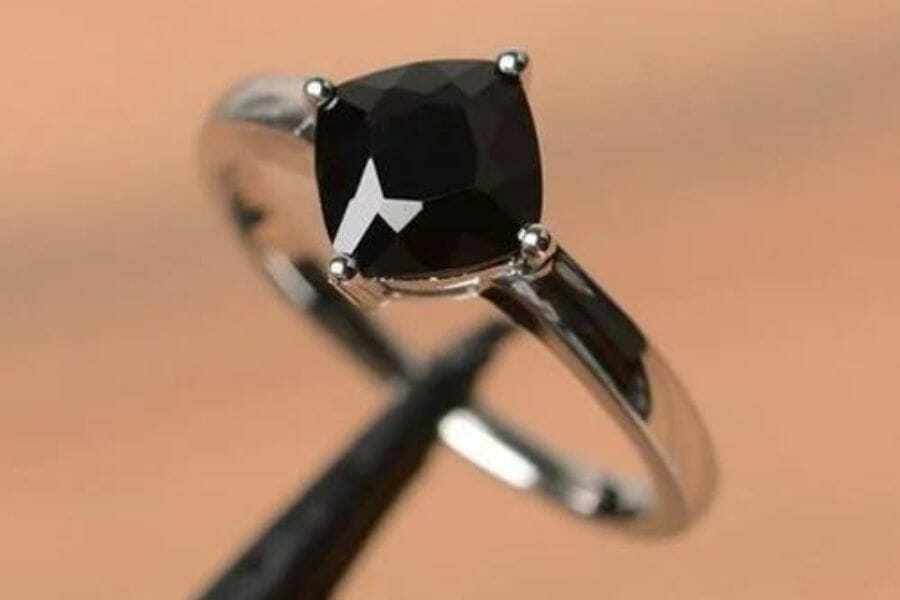
To get an appraisal for an onyx gemstone or piece of onyx jewelry, look for a certified gemologist or jewelry appraiser with experience in evaluating onyx gemstones. You can start by searching online directories, asking for recommendations from friends or family, or contacting local jewelry stores for suggestions. Choose an appraiser who has earned accreditation from a reputable organization, such as the Gemological Institute of America or the International Society of Appraisers.
Once you’ve found a qualified appraiser, contact them to set up an appointment for the appraisal. Inquire about the fees associated with the assessment, as these may vary depending on the appraiser’s expertise, the complexity of the piece, and the time required for the evaluation.
Before the appraisal, carefully clean your onyx gemstone or jewelry to ensure it’s free of dust, dirt, or any residue that might impact the evaluation. Gather any available documentation, such as purchase receipts, certificates of authenticity, or previous appraisals, as these can provide helpful information for the appraiser.
Bring your onyx item and any relevant documentation to the scheduled appointment. The appraiser will examine the gemstone or jewelry, considering color, clarity, pattern, size, cut, polish, treatment, and provenance. They may use specialized tools like a jeweler’s loupe or microscope to inspect the piece closely.
After the evaluation, the appraiser will provide you with a written appraisal report that includes a detailed description of your onyx item, the factors contributing to its value, and an estimated value based on current market conditions. Remember to keep the appraisal report safe and any other documentation related to your onyx gemstone or jewelry. It’s also a good idea to update the appraisal every few years to reflect changes in market value.

